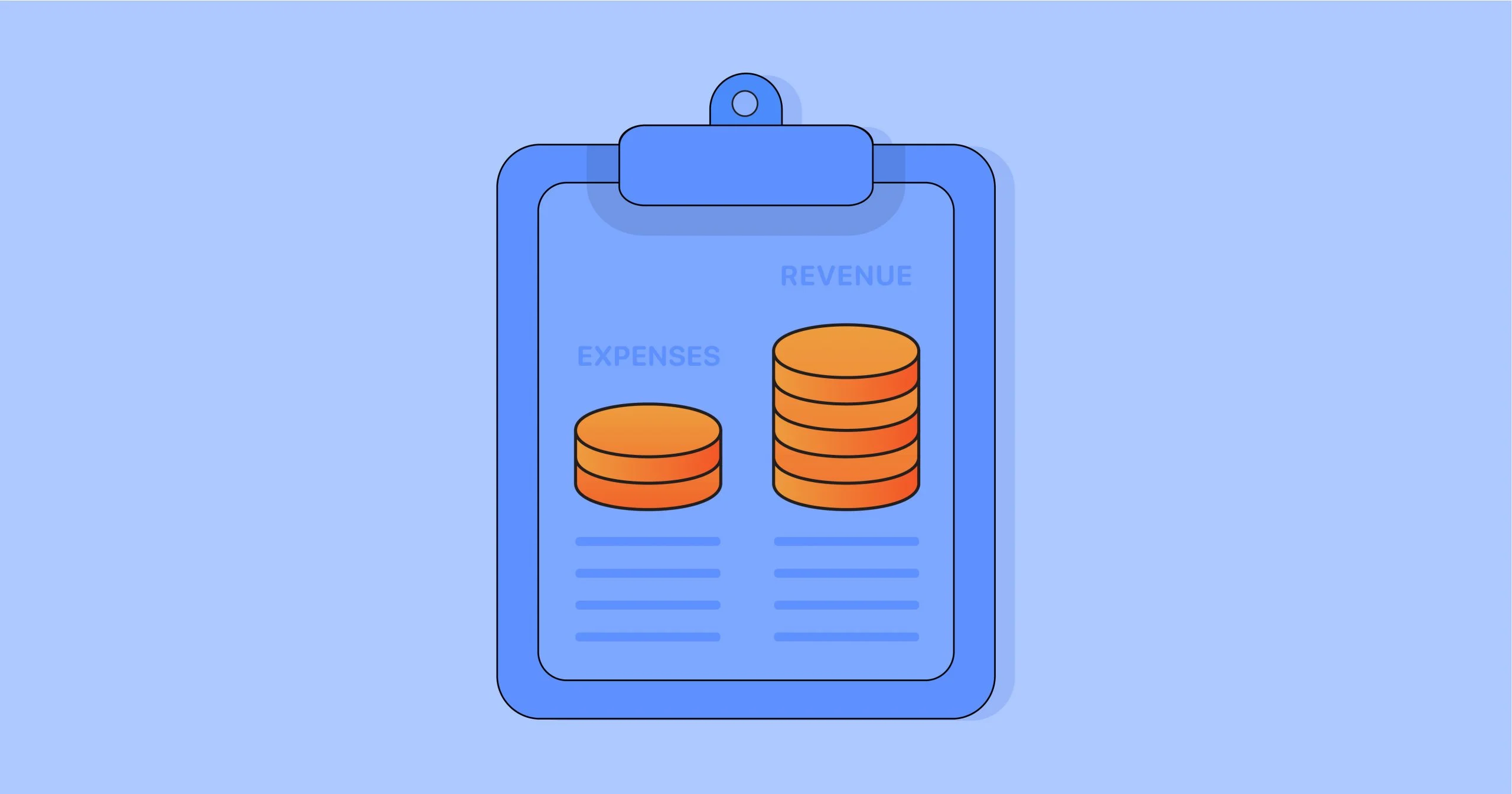
5 Challenges of Reporting Profitability in Ecommerce
Contents
How profitable is your business? It’s one of the most important questions for any business owner, yet many retailers and brands struggle to answer it. Ecommerce businesses that sell on multiple channels run into logistical issues trying to report profitability, be it from data spread out across platforms, incorrectly reporting fees, or other roadblocks.
To get the full picture of the unique challenges facing omnichannel retailers, we talked to ecommerce accounting experts Mario Nowogrodzki, CEO, and Keith Fileccia, COO, of Mendelson Consulting. Mario and Keith use their expertise and experience to help clients implement finance solutions to improve their business operations. They’ve supported their diverse multichannel and omnichannel clients through the following challenges firsthand.
Reporting All Costs
Determining profitability is a simple formula at first glance: take your costs and subtract them from your revenue. But if either of those two data points is wrong, well, so is your profitability. If you’re not reporting all the costs that go into selling a product, you’ll never have an accurate picture of your profits.
“Cost can be, unfortunately, for a lot of small and mid-sized businesses, a bit of a gray area,” Mario explains. “If cost is a gray area then so is profitability, and it should not be. It should be black and white. A lot of the time, the business operators and owners are not including the costs properly. They’re not allocating the costs to the products. What about inbound freight and shipping costs? What about customs costs? Everything that it costs you to bring an item from overseas here is part of the product cost.
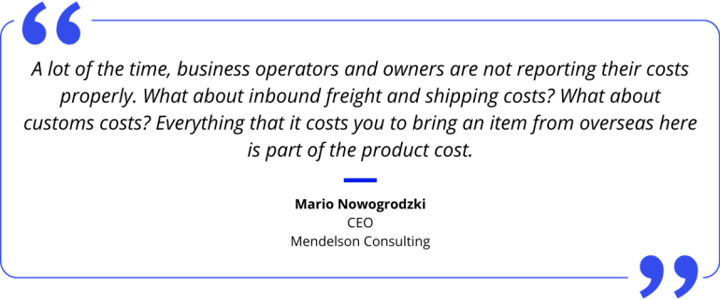
And Mario has seen this issue time and again. “You should see how many businesses do not include those costs in their accounting,” he says. “Therefore, profitability, even if it’s by product, can be inflated. It’s wrong.”
Mario’s tip for retailers? “It’s important that businesses are cognizant that cost is not just what you pay your vendor. That’s an important part of the cost, yes, but there’s a lot more to it. If you sell something for $1 and you’re buying it for $0.80 from a vendor, that’s fine, you make $0.20. That’s not bad. Wait a minute, what if it costs you $0.25 per item to bring it in-house? Well, you just lost $0.05 because you’re not selling it properly.”
The bottom line: Every item you sell comes with a whole host of costs, and it’s easy for a few to slip through the cracks. It’s crucial for ecommerce businesses to understand the breakdown of expenses from sourcing materials to getting products to the end customer, so profitability becomes a crystal-clear picture—not a costly estimate.
Marketplace Fees
Marketplace and ecommerce platform fees prove to be a significant challenge when reporting item or sales channel profitability. With complicated fees ranging from product-specific percentages, flat fees per item, and monthly charges, it’s no wonder why retailers have trouble keeping track.
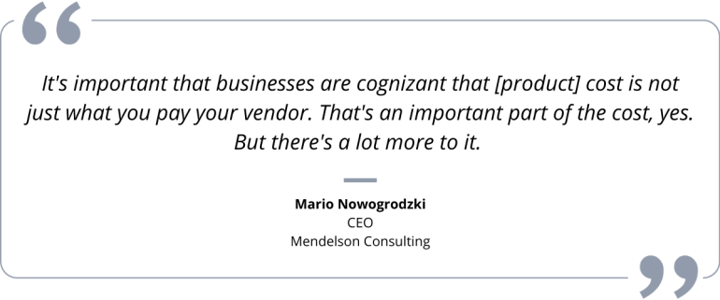
“When looking at channel-specific profitability, the key here is, ‘Am I making money after fees at the item level on the marketplace?’” Keith says. “Many business owners have no clue what the fees by item are. They see one big fee deduction. Most of them will enter it in QuickBooks as “Amazon fees” because they don’t have a tool that gives them the granularity.”
Keith shared a client’s story to illustrate this very issue. “We had a client that sold through both Vendor Central and through Fulfillment by Amazon (FBA). They had rejected $3.2 million in business through Vendor Central. Of the $3.2 million, one of them was an item that they kept ordering over and over again. I asked them, ‘Why aren’t you listing this on Vendor Central?’ They said, ‘Oh, because we make more money selling the same thing on FBA. It sells for $18.99 on FBA. When we sell it through Vendor Central, it’s $15.99.’
“In fact, I told them, ‘By the time you go through FBA fees, your net is about $11. When you go through Vendor Central, you sell it for $15.99. By the time you go through fees there, your net is about $13.’ They had been making decisions for two years based upon the actual sale price. That just shows you the difference these fees make.”
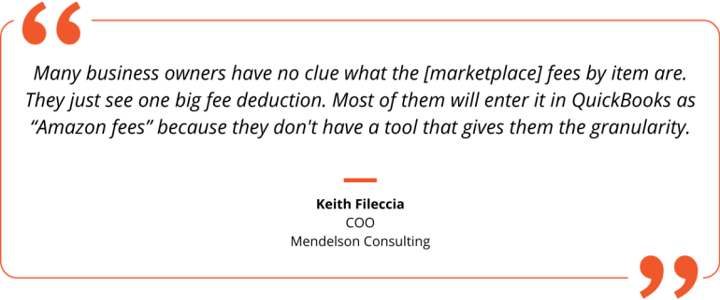
Healthy Profit Margin
It’s not only determining profitability that’s tricky—setting a goal is complicated too. As Mario explains, “Unfortunately there is not a benchmark for a healthy profit margin in ecommerce as a whole.”
“It varies greatly, not just business to business, but from industry to industry, each product line, each type,” he continues. “Some products are more conducive to a higher margin. Some are very, very thin margins. It just depends on the industry and on the product type. Every business type and every product type has a different profit margin that is conducive to a successful business.”
How retailers and brands can realize greater consistency in their margins? Conducting regular audits of your product catalog will reveal which offerings are worth your while to continue selling—and which ones you should cut.
Channel-Specific Profitability
Just as with your products, determining which sales channels are your strong suit is key to scaling your business. Channel-specific profitability insights inform better, data-driven decisions about where to sell certain products and focus your time.
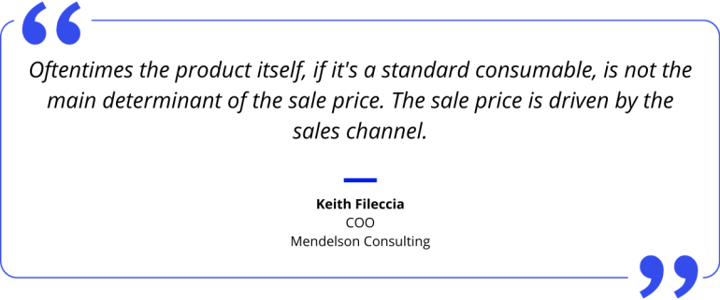
As Keith explains, “Oftentimes the product itself, if it’s a standard consumable, is not the main determinant of the sale price. The sale price is driven by the channel.” Which channel you sell on, be it a marketplace, online store, or brick-and-mortar, is a huge factor in determining profitability.
But figuring out how each channel compares is not easy. The more channels you have, the more your data is spread out. Add on any extra apps you have, and now your data is even more disparate. That’s why integration tools like Webgility make all the difference. “[Webgility Intelligence] tells you the data by channel, by product, and pulls in all the fees,” Keith recommends. “It’s an incredibly powerful tool.”
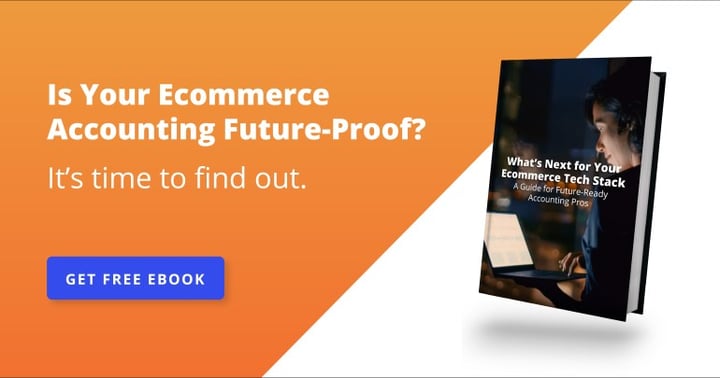
Forecasting for the Future
Figuring out historical profits is important, but even more important is predicting your future profits, and if your business itself is on a profitable track. “In the accounting world,” Keith says, “business owners are always asking: What do I owe? What am I owed? How much money do I have? How much is going out and when? How much is going to come in and when? Coming in and when is the hardest predictor.”
Keith continues, “That is the most difficult one to find because it’s a Ouija board, dartboard, and Magic 8-Ball all in one. Because of the changes caused by the pandemic, you cannot use this past year as a litmus test. You cannot use it as historical data because everything changed through the year. I think we’re even back to hoarding toilet paper now.”
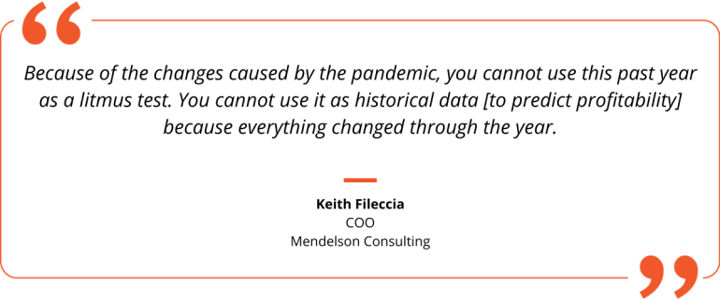
Mario adds, “What started last year, the waves [of supply chain delays] are going to continue for the foreseeable future. That’s really what it is. The hoarding is really because of these supply chain challenges more than people being irrational.”
But the future is clear on one point, Keith says: “One thing that is not going to change is that people have to pivot and they have to go online in order to make any revenue stream whatsoever. Most of them went to Shopify or Amazon or somewhere similar and jumped into that. They’re not going to go, ‘Pandemic’s over. Okay, I’m not going to shop or sell online anymore.’ That’s a new reality.”
By guest contributor Leah Allen-Manning
Yash Bodane is a Senior Product & Content Manager at Webgility, combining product execution and content strategy to help ecommerce teams scale with agility and clarity.



.png?width=56&height=56&name=image%20(1).png) Yash Bodane
Yash Bodane


